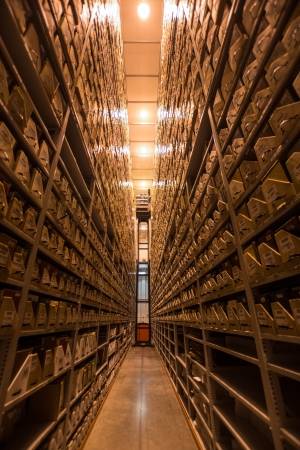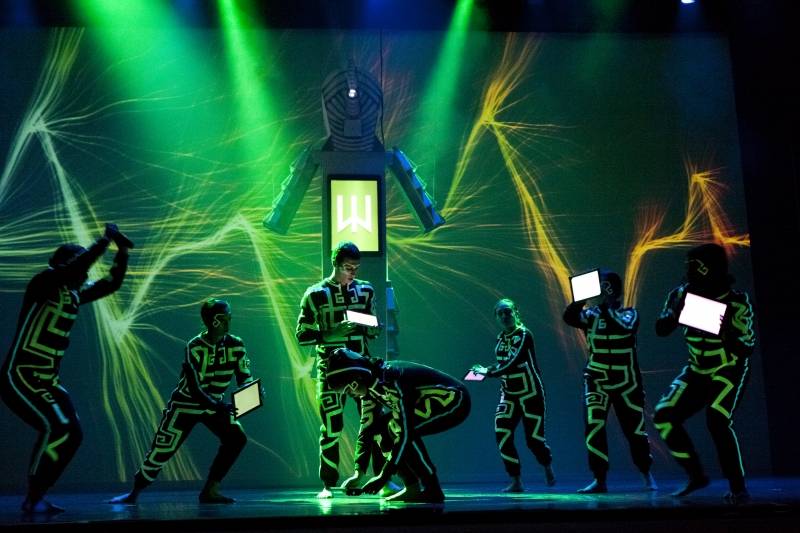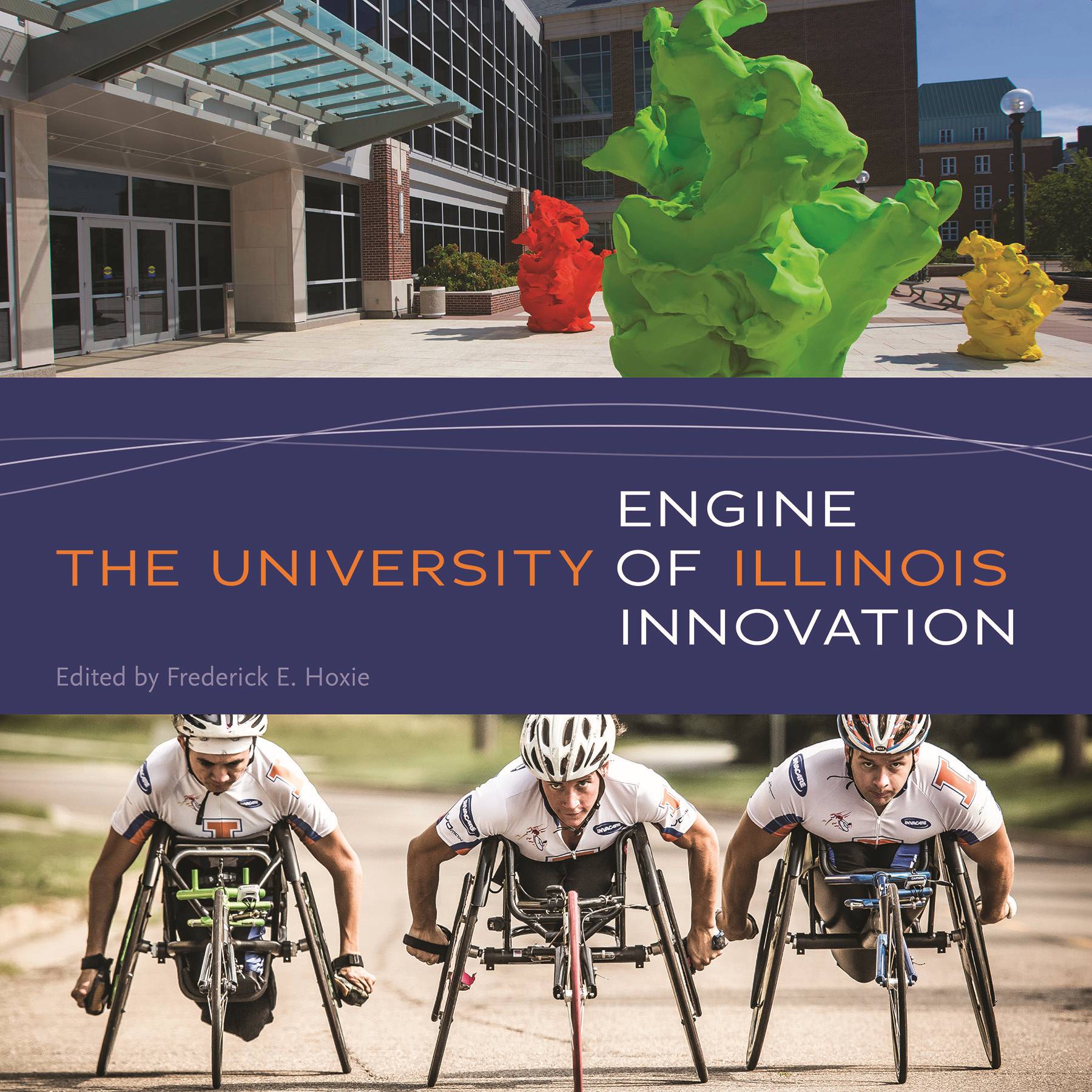Often I ask myself, “Who is this book or text for? Am I the intended reader, or is this item for someone else?” I found myself asking that question as I read the essays and short articles in The University of Illinois: Engine of Innovation. Published earlier this year, Engine of Innovation highlights the history of the university as a place for invention, inventors, innovators, and innovation. As part of the University of Illinois’ ongoing sesquicentennial celebrations, Engine of Innovation seeks to highlight the groundbreaking people, places, and moments that shaped Illinois. However, I have to really wonder who the book is for.
Engine of Innovation came from a proposal by the Department of History to commemorate the 150th anniversary of the university’s founding. The book acknowledges this fact and its heavy reliance on the Department of History’s faculty and students (undergraduate and graduate) to write the essays and articles. I suppose having mostly historians research and write the bulk of the text is appropriate, but for a book celebrating ingenuity and collaboration, I had to wonder if any thought was given to pulling in other departments to help flesh out the essays.
 Divided into three parts, the coffee table-sized book breaks the concept of innovation down into: the individual innovators, the inventions by innovators, and the places that inspire innovation. For example Isabel Bevier (Household Science i.e. Home Economics), Katharine Sharp (Library and Information Science), and Ven Te Chow (Engineering) are highlighted in Part One. Part Two showcases the foundations of the Illinois Historical Survey — the inspirational meeting that spawned public broadcasting, and Early Childhood Education along with the invention of the MRI and supersweet sweetcorn. Part Three begins with the Morrow Plots and ends with the construction of the Beckman Institute.
Divided into three parts, the coffee table-sized book breaks the concept of innovation down into: the individual innovators, the inventions by innovators, and the places that inspire innovation. For example Isabel Bevier (Household Science i.e. Home Economics), Katharine Sharp (Library and Information Science), and Ven Te Chow (Engineering) are highlighted in Part One. Part Two showcases the foundations of the Illinois Historical Survey — the inspirational meeting that spawned public broadcasting, and Early Childhood Education along with the invention of the MRI and supersweet sweetcorn. Part Three begins with the Morrow Plots and ends with the construction of the Beckman Institute.
The essays and articles highlight innovations that have shaped our lives locally, nationally, and internationally. What is most enjoyable about reading each essay or article is finding that tidbit of historical trivia. Many of us alum know that Illinois hosted the first homecoming in 1910, but did you know about Illini Nellie, the productive Brown Swiss cow? Okay, a few of you did. But did you know that there is a boulder and plaque commemorating her on the south end of campus? Okay, a few of you must be Agricultural students or alums or well-informed locals. Since that wasn’t my field of study, it was a new historical fact to me.
(Pictured left: The university’s high density storage facility. © Eric Kurt / Media Commons)
Most of the essays and articles are easy to read. “The Krannert Center for the Performing Arts” by Harry Liebersohn deftly explains who the Krannerts were, how they wanted their funds used, and how they helped to shape the KCPA. “Beyond Women’s Studies” by Kristen Allen skillfully covers the interdisciplinary department from its beginnings to its establishment as a program and how it has always worked with other departments. However, I did feel a few essays and article could have been clearer on their dates or explanation of events. One minute the author is talking about one topic and then jumps to another topic before jumping back again with very little transition or explanation. It felt disjointed and random, and I had to go back to reread the section to make sure that I was following the thread of thought correctly. Also, sometimes the wording is purposefully ambiguous in the essays. One essay notes that women were present since the founding of the university, but the next essay gives a year for when degrees were conferred to women. I suppose that’s why a timeline is included towards the back of the book even if it doesn’t cover every event presented in the essays.
(Pictured below: Kama Begata Nihilum Concert: February Dance 2014. Photo by Natalie Fiol, courtesy of the University of Illinois Department of Dance.)

Engine of Innovation is a good historical tool for sharing the history of Illinois as an institution of higher learning. It’s a good resource for learning about the people who the buildings are named for on campus (e.g. Taft, Davenport, and Gregory). Or in the case of Ellnora Krannert, having a festival named in her honor. The book makes excellent use of the University Archives for unique images of campus (like the shoddy Stadium Terrace Housing for GIs and their families) and documents (like the Illinois Industrial University advertisement). Engine of Innovation is not a good book for recent graduates or sports fanatics; it is a good book for inspiring the Illini alum or historian. While I would’ve liked to have seen more collaboration in the writing of the text or maybe a few more essays to include more departments, Engine of Innovation does capture a lot of Illinois’ history and the innovators who shaped the institution into what we know of it today.
The University of Illinois: Engine of Innovation, edited by Frederick E. Hoxie and published by the University of Illinois Press, is available through UI Press, Amazon, the Illini Union Bookstore, and other sellers.
All images courtesy of the University of Illinois Press.








